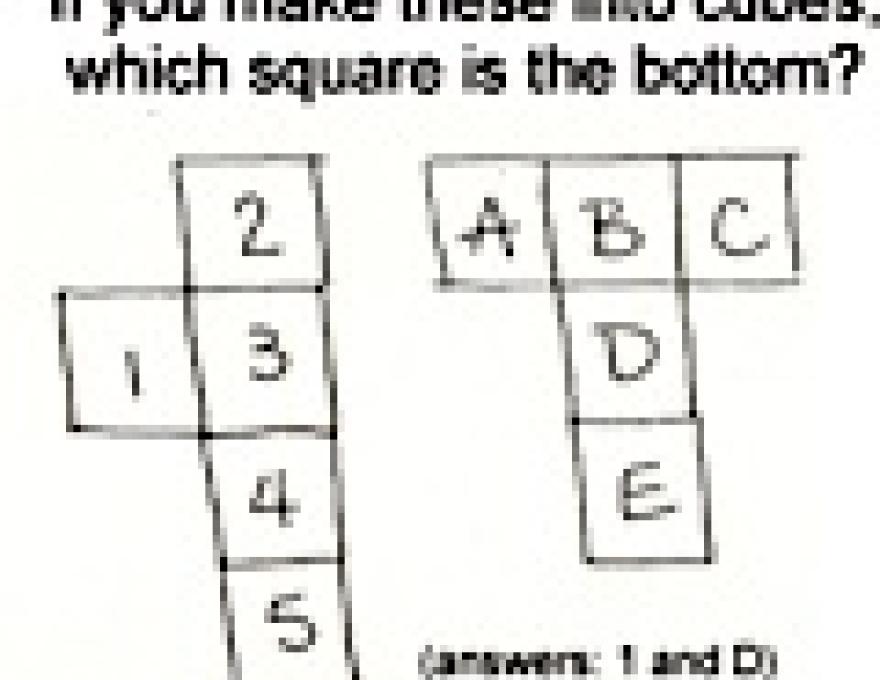by Sarah Major, M.Ed
As a homeschooling parent, you naturally want to provide the best learning experience for your child. You’ve doubtless heard a lot about the various learning styles and how they might impact how your child learns, but you also might wonder how much of it is relevant to your situation. If your child is sailing through learning reading and math, likely not much of the learning styles discussion would impact the way you currently teach.
However, if your child is struggling with learning the basic skills, looking at learning styles might be important. In particular, visual-spatial learners tend to face learning difficulties because traditional curricula are designed for a different type of learner.
Although every child has their own learning strengths and differences, here are some questions to consider in determining whether or not your child learns most naturally through visual-spatial methods.
1. Does your child seem to intuit and care about what others are feeling?
2. Does your child seem to forget what you tell him?
3. Does he seem to recall well what he sees?
4. Does she frequently lose track of time?
5. Does he seem talented in art, music, dance, or drama?
6. Does she seem disorganized?
7. Does he have trouble with spelling?
8. Does she have trouble remembering phonics rules?
9. Does he seem to remember how to get places he’s only been to one time?
10. Does your child like to construct things?
11. Does she like to figure out how things work (taking them apart?)
12. Can your child visualize objects from different perspectives? (This one might be hard to know unless you ask specifically.) For an example, see first image.

13. Does your child frequently visualize things? Example: does he frequently see one thing and say “Oh, that looks like a _____________” ?
14. Does he start laughing during a conversation because a combination of words reminded him of a funny picture in his head?
Example: I just came across this recipe heading: "How to Make Chocolate Bark: For many of us, chocolate is enough. But when you add the satisfying crunch of nuts and sweet morsels of dried fruit, that's a whole other story. Now we're talking real goodness." I instantly got this image stuck in my head: (see chocolate image)
15. Does your child seem to know things without being able to tell you why or how? Can she solve a problem without being able to tell the steps she took to get to the solution?
16. Is your child good at puzzles or mazes?
17. Does your child solve problems in unusual ways? In other words, once you tell him what the goal is, does he arrive at that goal in unexpected ways?
18. Does she have a vivid imagination?
19. Does your child have at least one parent that would answer “yes” to most of the questions above?
If this sounds like your child, then most likely he or she is a visual-spatial learner.
*Questions based on a quiz from Golon, A. S. (2004). Raising Topsy-Turvy Kids: Successfully Parenting Your Visual-Spatial Child. Denver: DeLeon Publishing.
Research About Visual-Spatial Learners
Dr. Silverman, licensed psychologist and noted author, has researched in depth what it means to be a visual learner. Her research reveals that a large percentage of the population fall into the visual-spatial category, to varying degrees. Here it is in her own words:
“When we developed the Visual-Spatial Identifier, a process that began in 1992 and took the better part of a decade, we still thought that a small percentage of the population would be visual-spatial learners. The results of the second validation study of our Identifier, in 2001, astounded us. Approximately one-third of the 750 students we had assessed in two schools were strongly visual-spatial and another 30% were moderately visual-spatial. That represented the majority of the school population!”
The Dissonance Between Traditional Materials and Visual Learners
I’ve experienced first-hand the difficulties visual learners have using traditional curricula. I am strongly visual-spatial myself, and have worked in depth with visual-spatial and kinesthetic learners in formal education settings. A lot of emotional pain results from these learners being in a traditional setting. Dr. Silverman shows us graphically why this dissonance occurs – and I might add, why so many visual-spatial children are believed to be disabled and in need of special education.
Success in school depends largely on a student’s ability to:
• Hear and follow directions
• Complete work on time
• Memorize facts
• Remember quickly
• Follow steps or rules as in phonics or math
• Write neatly
• Spell correctly
• Be on time and prepared
• Be organized
Dr. Silverman goes on to state that in our world, adults are most successful when they can:
• See the big picture
• Predict or intuit what might happen
• Create new products or new solutions
• Take risks
• Problem-solve
• Team build, identifying the strengths of others on the team
• Be computer literate
• Deal with complex issues, seeing the parts to the whole all at one time
• Read people well
If you decide your child is likely a visual-spatial learner, then what?
For every concept you need your child to learn, let him illustrate it for himself. If it is sight words he needs to learn, please don’t just drill him with flashcards! Give him time to write each word on a card and illustrate it. There are products out there that meet the needs of visual-spatial learners.
The bottom line? If you have a visual-spatial learner, enjoy! As long as you don’t try and make them conform to standards they cannot hope to achieve, what you will have is a happy, creative, amazing child!
I've written a lot in my blog about how the visual-spatial brain works and practical ways to boost reading confidence in every learner. To read some of these tips, visit http://child-1st.typepad.com/my_weblog/visual-learners/
Follow this link to read more about visual-spatial learners: http://www.education.com/reference/article/Ref_Visual_Learner/
All references to materials by Linda Kreger Silverman, Ph.D. come from Visual Spatial Resource Center
Sarah Major, CEO of Child1st Publications, grew up on the mission field with her four siblings, all of whom her mother homeschooled. As an adult, Sarah homeschooled a small group of children in collaboration with their parents, and has taught from preschool age to adult. Sarah has been the Title 1 director & program developer for grades K-7, an ESOL teacher, and a classroom teacher. As an undergraduate student, Sarah attended Wheaton College in Wheaton, Ill. where she received a B.A. in art. Sarah then received her M.Ed. from Aquinas College in Grand Rapids, MI. In 2006 Sarah resigned from full-time teaching in order to devote more of her time to Child1st. In her spare time Sarah enjoys gardening, cooking, pottery, quilting, and spending time with her family.
Child1st Publications, LLC
www.child-1st.com
704-240-9957
1379 S Aspen St
Lincolnton, NC 28092







